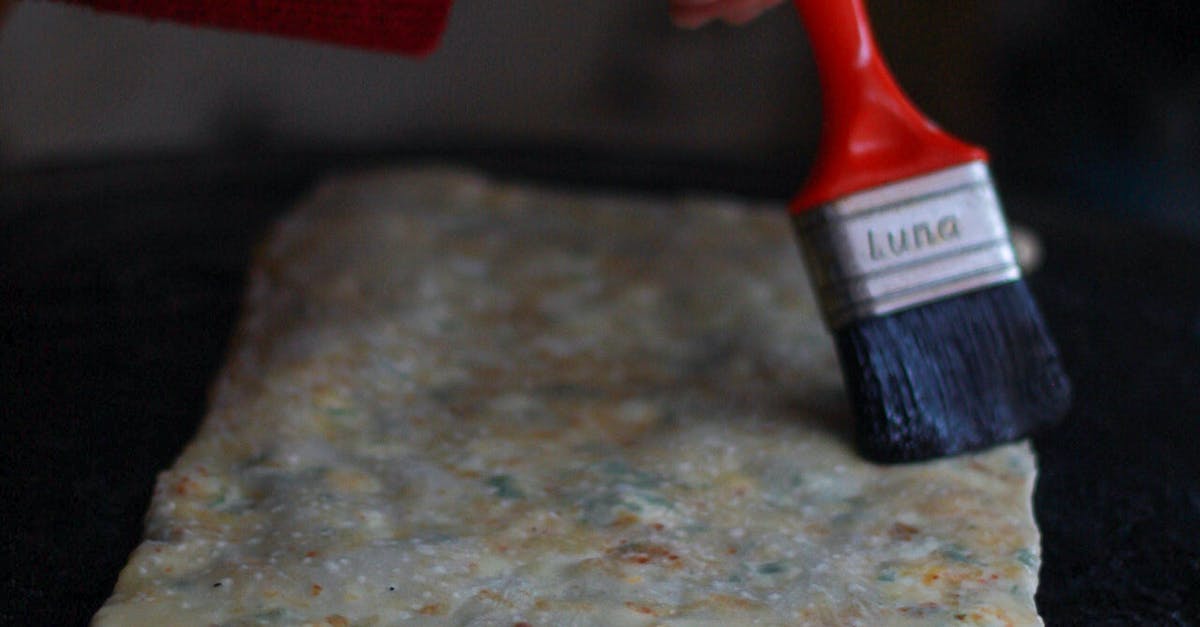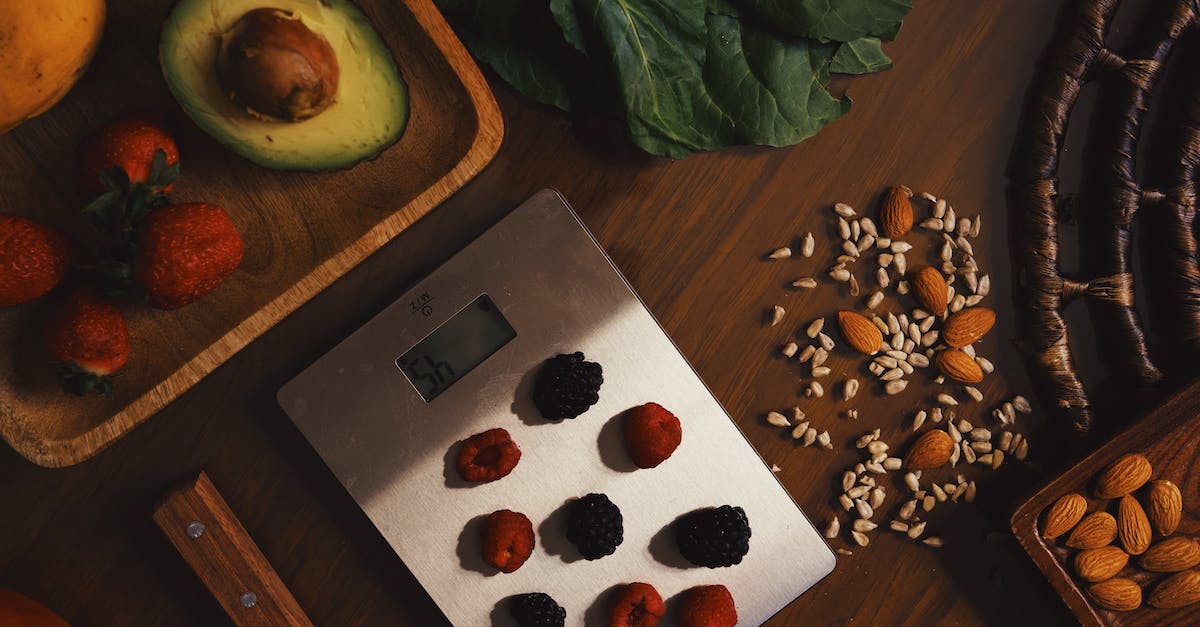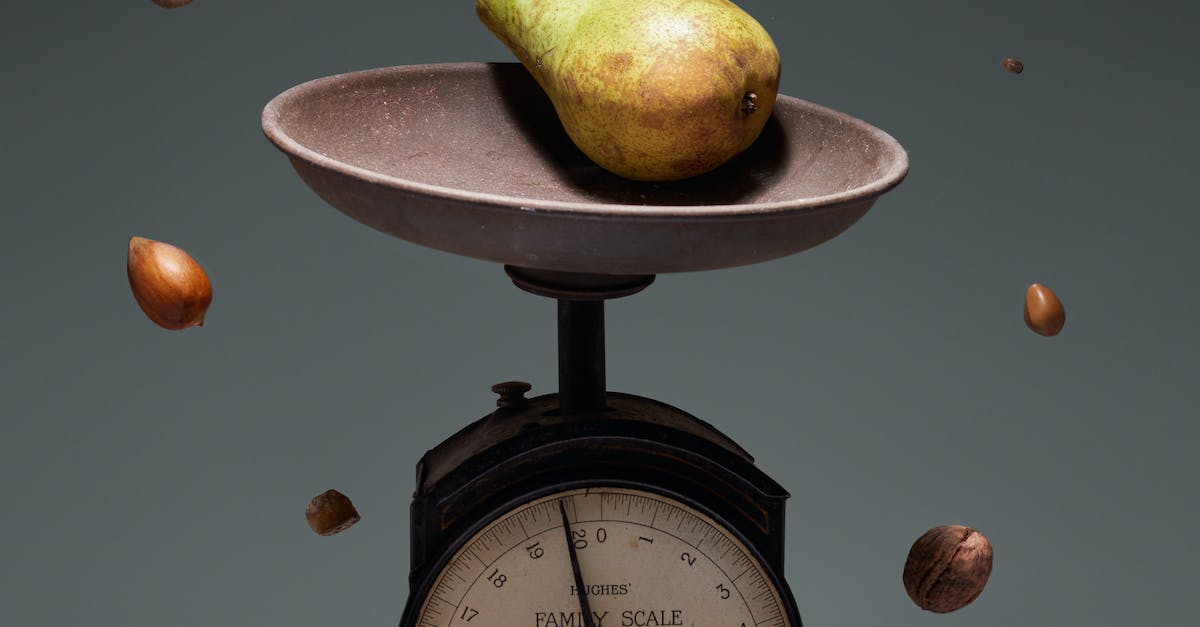Kitchen scales are my latest obsession, and let me tell you, I am beyond passionate about these little gadgets. I know what you’re thinking, “Who in their right mind could be so excited about a kitchen scale?” But hear me out, my dear foodie friends! These bad boys have completely revolutionized the way I approach cooking and baking, and I am here to convert you to the wonders of kitchen scales.
Gone are the days of measuring cups and spoons, where one wrong scoop can throw off your entire recipe. With a kitchen scale, you can measure ingredients with the utmost precision, whether it’s a pinch of salt or several pounds of flour. And don’t even get me started on the joys of weighing out your ingredients in grams or ounces instead of struggling with silly cups and tablespoons.
But my love for kitchen scales doesn’t just stop there. Oh no, my friends, there are endless possibilities with these trusty companions. From perfectly portioned meals to artfully crafted pastries, the sky is the limit. So join me on this journey of culinary accuracy, and let’s unlock our inner chefs with the power of kitchen scales.
Introduction to Kitchen Scale Recipes

As a passionate enthusiast of kitchen scales, I have come to appreciate the value they bring to cooking and baking. And there’s no better way to take advantage of the benefits they offer than through kitchen-scale recipes. This article will introduce you to the world of kitchen-scale recipes and the many ways in which they can improve your cooking experience.
Firstly, let’s look at what makes kitchen-scale recipes unique. Unlike traditional recipes that rely on measurement tools such as cups and spoons, kitchen scale recipes use weight to measure ingredients. This method is more accurate and allows for consistent results every time you cook or bake. It also eliminates the need to rely on guesswork and eyeballing ingredients.
Here are some benefits of using kitchen-scale recipes:
- Precision: Measuring ingredients by weight ensures a precise and accurate result every time you cook or bake. This is especially important in baking, where the slightest deviation in measurements can impact the final outcome.
- Consistency: Using a kitchen scale to measure ingredients ensures that your recipes turn out consistent every time. This is particularly useful when you’re trying to recreate a particular dish.
- Time-saving: Using a kitchen scale can save time in the kitchen since you don’t need to use multiple cups or spoons to measure your ingredients. Simply put your mixing bowl on the scale and add ingredients until you reach the desired weight.
- Less Cleanup: Measuring ingredients with a kitchen scale typically results in less mess, as you can simply weigh out the ingredients into one container instead of using multiple cups or spoons.
In conclusion, using a kitchen scale to cook and bake can be a game-changer for your kitchen experience. With the precision, consistency, time-saving benefits, and less cleanup, you’ll wonder how you ever managed without one. So, if you haven’t already, give kitchen-scale recipes a try. You might be surprised by the improvement they bring to your cooking and baking.
Benefits of Cooking with a Kitchen Scale

- Accuracy: Using a kitchen scale ensures that your ingredients are measured accurately every time. Cooking requires precise measurements, and a kitchen scale is a much more precise tool than a measuring cup or spoon. This can be especially important when working with small amounts of ingredients or when following recipes from different countries that use metric measurements.
- Consistency: A kitchen scale allows you to consistently reproduce your favorite recipes. It’s important to use the same amount of ingredients each time you make a recipe, and a kitchen scale makes it easy to do so. This is especially important when baking, where even small variations in ingredients can drastically affect the final product.
- Time-saving: Measuring ingredients with a kitchen scale can be much faster than using measuring cups and spoons. You can simply place your bowl or container on the scale, tare it to zero, and add your ingredients directly to the bowl. This eliminates the need for multiple measuring cups and utensils and can save you valuable time in the kitchen.
- Less Mess: Using a kitchen scale can also result in less mess in the kitchen. When using measuring cups and spoons, it’s easy to spill ingredients or create extra dishes that need to be washed. A kitchen scale allows you to measure ingredients directly into your cooking or mixing vessel, which can leave you with fewer dishes to clean up.
- Portion Control: For those watching their calorie intake or trying to maintain a healthy diet, a kitchen scale can be an invaluable tool. Using a scale to weigh your food can help you control your portion sizes and make sure you’re not overeating. This can be especially helpful when trying to stay on track with a weight loss or fitness plan.
Overall, using a kitchen scale can make cooking easier, more accurate, and more enjoyable. With the benefits of consistency, accuracy, time-saving, less mess, and portion control, it’s no wonder so many home cooks have made a kitchen scale a staple in their kitchens.
How to Accurately Measure Ingredients with a Kitchen Scale

Are you tired of using measuring cups and spoons and getting inconsistent results? A kitchen scale may be the solution to your cooking and baking woes. Below are three tips on how to accurately measure ingredients with a kitchen scale.
- Weigh ingredients using metric units: Metric units, such as grams and kilograms, are more precise than U.S. customary units, such as ounces and pounds. Most kitchen scales have the option to switch between the two units, so make sure to use the metric measurements for better accuracy.
- Tare the scale: Taring the scale means resetting it to zero after placing a container on it. This allows you to measure only the weight of the ingredients you’re adding and not the container itself. Make sure to tare the scale before adding each ingredient to avoid any errors.
- Use weight-based recipes: If you’re using a recipe that only provides volume measurements (cups, tablespoons, etc.), convert the measurements to weight using a conversion chart. This ensures that you’re adding the exact amount of each ingredient, resulting in consistent and accurate results every time.
By following these tips, you can take the guesswork out of measuring ingredients and achieve more reliable results in your cooking and baking.
Popular Kitchen Scale Recipes

1. Baking with Accuracy: A kitchen scale is an essential tool for any baker. By using weight measurements instead of volume measurements, you can achieve perfect baking results every time. Try making your favorite cake or bread recipe using a kitchen scale and see the difference it makes.
2. Precision Cooking: Cooking with a kitchen scale is not limited to baking. Measuring ingredients such as meat, vegetables, and grains by weight allows for precise cooking and perfect portion control. Use your kitchen scale to make recipes such as homemade burgers, stir-fry, and quinoa salad.
3. Healthy Eating: Measuring your food by weight is an effective way to monitor your portions and control your calorie intake. Use a kitchen scale to measure out your fruits, vegetables, and proteins to ensure you are sticking to your health goals. Try making delicious recipes such as grilled chicken with roasted vegetables or a refreshing fruit salad.
4. Cocktail Making: A kitchen scale can even be used for making cocktails. Perfectly measure out your ingredients for drinks such as margaritas, mojitos, and martinis. Impress your guests with a perfectly crafted cocktail every time using your trusty kitchen scale.
Tools for Measuring with a Kitchen Scale

- Accuracy: One of the main benefits of using a kitchen scale for measuring ingredients when cooking is the accuracy it offers. Unlike measuring cups and spoons, which can vary in size and shape, a scale allows for precise measurements in grams or ounces to ensure consistent results.
- Convenience: Using a kitchen scale for measuring ingredients is incredibly convenient. Rather than having to use multiple measuring cups and spoons, which can become cluttered and time-consuming, a scale eliminates the need for all of those tools and simplifies the process of measuring ingredients.
- Efficiency: Along with convenience, using a kitchen scale for measuring ingredients is also incredibly efficient. A scale allows for quick and easy measurements without the need for math or conversions. Additionally, weighing ingredients directly into mixing bowls or other containers reduces the number of dishes that need to be washed.
- Portion Control: A kitchen scale is also a great tool for portion control, making it easier to stick to healthy serving sizes. By weighing out food portions, individuals can ensure they are eating the correct amount of food, which can be especially helpful for those with specific dietary needs.
- Versatility: Finally, a kitchen scale is an incredibly versatile tool in the kitchen. Along with measuring ingredients for recipes, a scale can be used to weigh fruits and vegetables for juicing or canning, to portion out meat for freezing, and for many other purposes.
Final Thoughts on Using a Kitchen Scale

After exploring various recipes that can be made with a kitchen scale, it is safe to say that a kitchen scale is a handy tool for every kitchen. From measuring precise quantities of ingredients to converting grams to ounces, a kitchen scale offers numerous benefits.
Here are some final thoughts on using a kitchen scale in the kitchen:
- Accurate Measurements: With a kitchen scale, you can measure ingredients accurately, making your recipes turn out perfect every time.
- Streamlined Cooking Process: A kitchen scale helps in streamlining the cooking process, by eliminating the need for measuring cups, thus reducing the cleanup time.
- Better Portion Control: Measuring food on a kitchen scale helps in better portion control, leading to healthier eating habits.
- Converting Different Units: Kitchen scales can easily convert measurements from one unit to another, making it easier to follow recipes from different countries with different measurement systems.
- Multipurpose Tool: A kitchen scale can be used for more than just kitchen measurements. It can be used for weighing mail, jewelry, and even small items for DIY projects.
- Savings: Measuring ingredients with a kitchen scale can lead to less food waste and fewer ruined recipes, ultimately saving time and money.
In conclusion, a kitchen scale is a must-have tool for anyone who takes their cooking seriously. With its numerous benefits and practical uses, a kitchen scale is an investment that will pay off in your culinary creations for years to come.
Conclusion
And there you have it, folks! Our list of top kitchen-scale recipes has come to an end. I hope you’ve enjoyed reading through it as much as I enjoyed compiling it.
As a true kitchen scale enthusiast, I find using a scale to measure ingredients to be both satisfying and precise. And with these recipes we’ve shared, you can see how using a scale can elevate your cooking game exponentially.
Gone are the days of guessing ingredients or relying on measuring cups that can vary in size. With a kitchen scale, you know exactly how much of each ingredient you’re using, resulting in perfectly balanced flavors and textures every time.
So if you haven’t already invested in a kitchen scale, I highly suggest you do so. Not only will it make your cooking more precise, but it’ll also add an extra level of satisfaction to your kitchen adventures.
Until next time, happy cooking and happy weighing!

